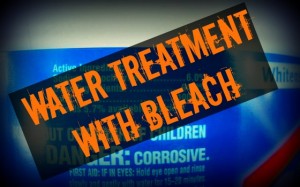 Water storage is a cornerstone of any preparedness plan, but it’s not as simple as pumping water into a tank and screwing on the cap.
Water storage is a cornerstone of any preparedness plan, but it’s not as simple as pumping water into a tank and screwing on the cap.
In fact, many homemade water treatment systems actually make water quality worse than it was before it was treated… hard to believe but true.
One reason for this is that water treatment and filtration systems can create a false sense of security. Then, when it comes time to drink the stored water, it’s easy to ignore the need for testing, especially since you “treated and filtered” it prior to storage.
The longer your water sits in storage, the greater the possibility that bacteria can take hold and contaminate your supply. If you’ve spent time in a tropical area, you know that water-borne illnesses can get out of control in no time at all.
That’s why it’s so crucial to treat your water properly before storing it. That way, you can be sure your water supply isn’t going to make you sick.
Here’s a dirt simple method for treating your water with household chlorine bleach (courtesy of the North Carolina State Cooperative Extension Service). You may want to print this out:
Instructions
Use plain Jane liquid household chlorine bleach that contains at least 5.25 percent sodium hypochlorite. Avoid formulas with added soaps or scents. Add the bleach according to the table below, using a clean, uncontaminated medicine dropper.
4 drops bleach per quart or liter container of water
8 drops bleach per 2-quart, 2-liter, or ½ gallon container of water
16 drops bleach, or 1/4 teaspoon, per gallon or 4-liter container of water
Here’s the conversion chart for larger quantities:
8 drops = 1/8 teaspoon
16 drops = 1/4 teaspoon
32 drops = ½ teaspoon
64 drops = 1 teaspoon
192 drops = 1 Tablespoon
384 drops = 1/8 cup which is equal to 2 Tablespoons


According to your figures, how many cups of chlorine bleach is required for 500 gallons of water?
Hi Bill. According to this chart 1 teaspoon of bleach is required for 4 gallons of water. 500 gallons/4 = 125 teaspoons, That’s 2.604 Cups (2 cups and 29 teaspoons).
Oli, are you saying that I need to do this treatment even if I am on city water as opposed to a well, or as you are referring to here a “homemade water treatment system? We are dealing with a potential dangerous chemical here, So please clarify for me.
Hey Jerry, City water has been treated with chlorine already, so it should be reasonably safe to store. If it’s well water, rainwater, or another untreated source, treat it. At these low concentrations, there’s no harm in treating even city water with the appropriate amount of chlorine bleach, just to ensure that no harmful bacteria takes root in your storage tank.
Where is my answer from jan10 2014??????????